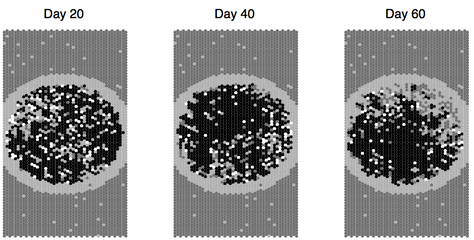It seems like today's Project NExT panel on flipped classrooms was a big success. We had a lot of interest in the session, and the questions and discussion were really insightful and engaging. I'd like to thank Rachel Levy, Elizabeth Stepp, Jeremy Strayer, and Ron Taylor for donating their time and expertise as panelists! Also a big thanks to my co-organizers Brandy Doleshal, Stacy Hoehn, and Larissa Shroeder
 Katie Montovan, Tom Seeley, Laura Jones and I have just recently had a piece of work looking all cell allocation in honey bee comb accepted at the Journal of Theoretical Biology. I figured it would be a good time to give a run-down of the project. You might've heard that honey bees perform a waggle dance inside the hive to communicate the location of food sources to their sisters. What I didn't know at the start of this project is that honey bees also have a fairly sophisticated resource storage strategy. A global pattern of cell allocation emerges from the individual actions of many bees. Our project extends a model proposed by Scott Camazine and coauthors by presenting biologically relevant and realistic rules that individual bees could follow in order to both develop and maintain the observed pattern. Here I'll give a brief overview of the problem and our work. For a complete review of the literature, check out the arXiv preprint or the accepted version at JTB. |
|
 RSS Feed
RSS Feed
